Lavender
English and French lavender varieties are well suited for growing outdoors. Some of them grow up to 80 cm and look rich in large floor tubs, but there are also dwarf varieties that can be displayed on the loggia in a neat group. Small purple flowers exude a subtle, soothing aroma, for which this crop is so valued.
Lavender blooms from May to August and does not require careful care – it is enough to provide it with loose alkaline soil with an admixture of river sand.
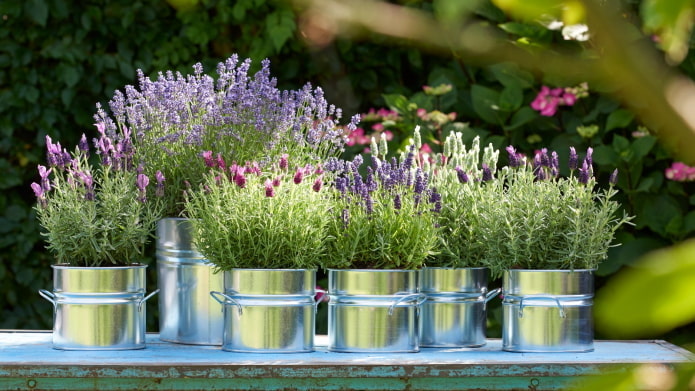
Petunia
This annual is popular due to the incredible variety of colors. Petunia is universal, it can be kept both indoors and in a flowerbed. Cascading varieties are ideal for the street, which have been given a separate term – surfinia. They hang picturesquely from the flowerpot and can reach a length of 2 m.
Petunias love sunlight and are afraid of strong wind. It can damage delicate shoots, so it is better to keep the plant on a glazed balcony facing south or southeast.
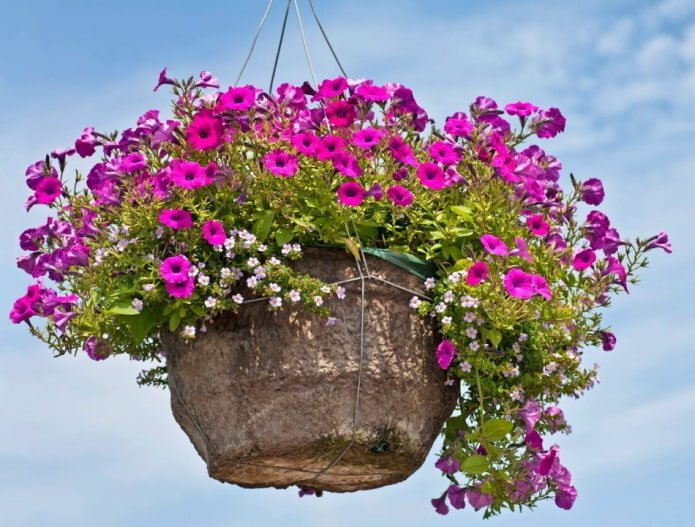
Calibrachoa
The plant is surprisingly similar to petunia and was long considered its subspecies, but biologists have found a fundamental difference both in the genomes of these crops and in the conditions of maintenance. Calibrachoa also loves bright sun, but needs strictly dosed watering, since its root system quickly rots from over-watering.
To ensure that the flower lives up to its name (“Million Bells”), it must be trimmed regularly during the growing season.
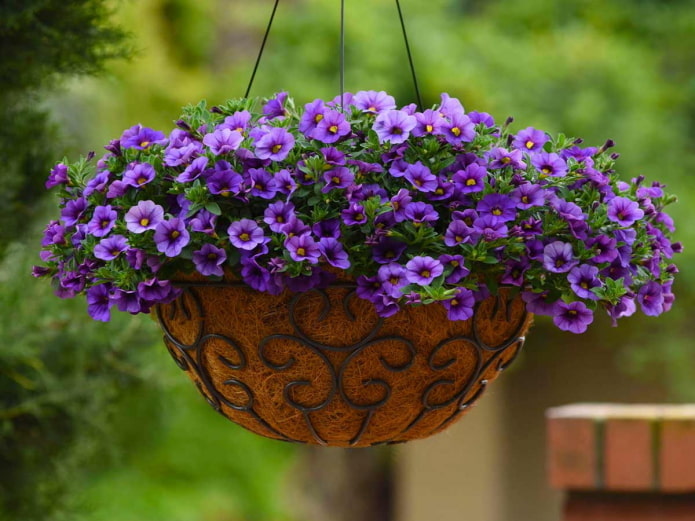
Fuchsia
The bizarre lantern-shaped buds of fuchsia feel at ease in a fresh, cool and humid climate, and cannot stand the scorching sun and heat, so the crop is well suited for planting on the north side of the house. The abundant flowering of this beauty strongly depends on the saturation of the soil with valuable minerals, mainly nitrogen.
During the warm season, fuchsia can be planted in the garden, preferably buried in the ground directly in the pot, so that in the fall it can be easily removed and taken into the house.
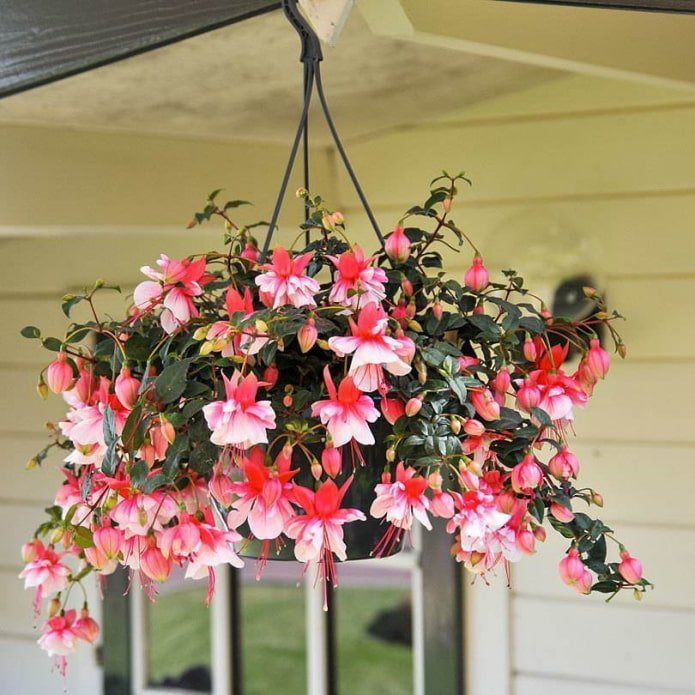
Bacopa
The South African heat-loving crop, which is otherwise called sutera, grows well in outdoor flowerpots if planted in fertile, slightly acidic soil and watered regularly. Small flowers literally dot the lush bush, which looks gorgeous, including thanks to its pretty leaves. Bacopa colors are varied, but snow-white varieties are most common.
Sutera seedlings are taken outside in the second half of May, when the threat of sudden night frosts has passed, and there the plant charms passers-by until the beginning of autumn.
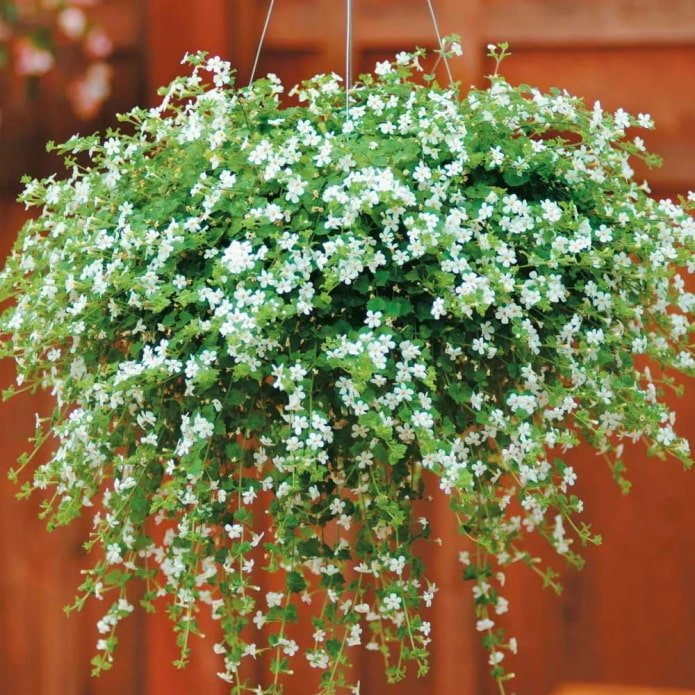
Lobelia
This herbaceous, densely flowering crop also comes from South Africa and belongs to the bellflower family, which you understand at the first glance at its perky blue-violet flowers. Lobelia is a perennial plant, but in our country it is grown as an annual, since it can withstand temperatures no lower than +7 degrees.
Bush varieties of lobelia look great in balcony boxes and outdoor tubs, ampelous ones – in hanging flowerpots.
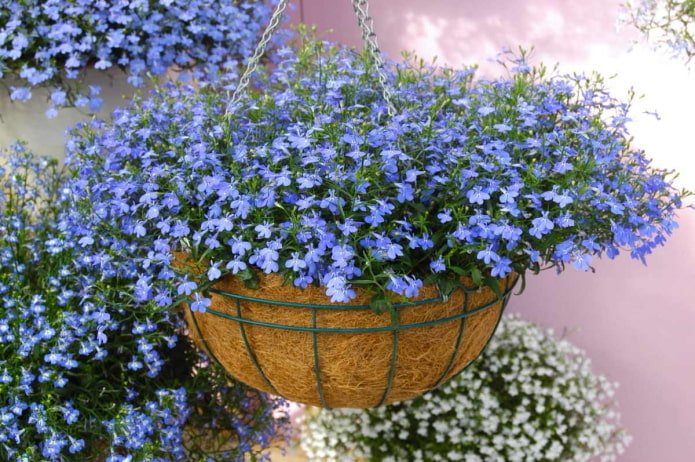
Balsam
Small balsam bushes can be seen on balconies and terraces throughout Western Europe, but in our country this plant with beautiful dark green leaves and large delicate flowers has found many fans. Varieties for outdoor planters are 25-50 cm tall, have a color from peachy-pink to bright purple, and a long flowering period – from April to October.
Older people know balsam as “Wet Vanka” due to its ability to release excess moisture from its foliage in the form of dew drops.
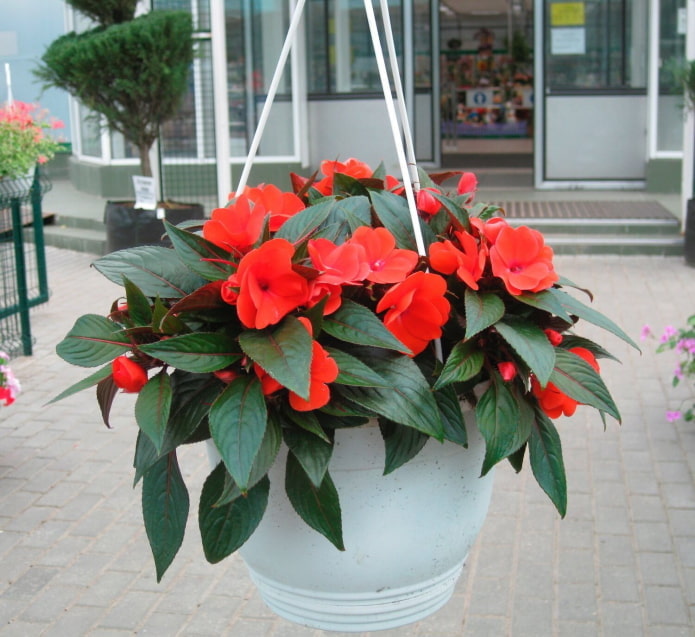
Alyssum
A North American perennial from the cabbage family is famous for its endurance – and no wonder, because in the wild it is a rocky ground cover. The color range of alyssum, or simply alyssum, is diverse: there are white, yellow, purple, lilac, pink and violet varieties. All of them are compact, 20-40 cm, and look great in outdoor flowerpots and balcony greenhouses.
Alyssum is actively used in landscape design, planted in mixborders, flower beds, rock gardens and rockeries.
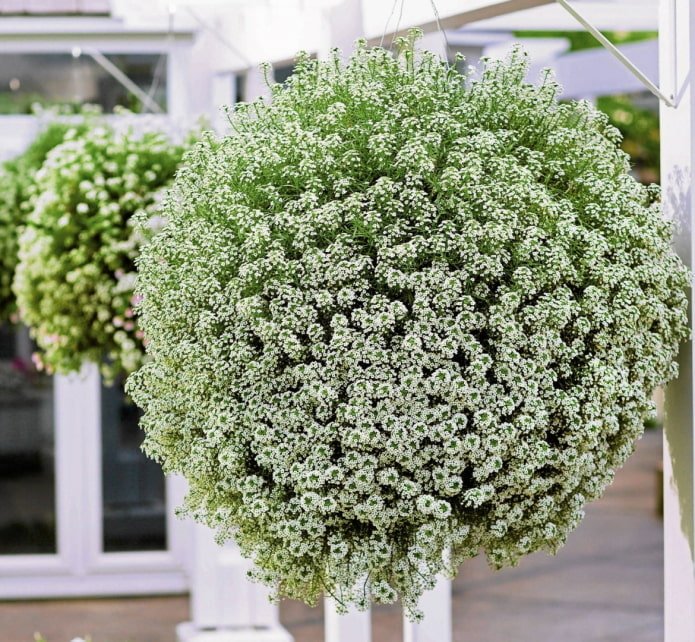
Hosta
Why are we all talking about flowers? There are crops that are valued for the beauty of their foliage and readily grow outdoors. Perennial shade-tolerant hostas, which came from China, are now familiar to any gardener – their rounded, lush bushes with lanceolate, edged leaves are found in every second garden plot. You can grow any variety of this plant in outdoor flowerpots, from the smallest to giants.
Hosta can bloom, throwing out long vertical peduncles with white or light purple buds, but this does not last long – one summer month.
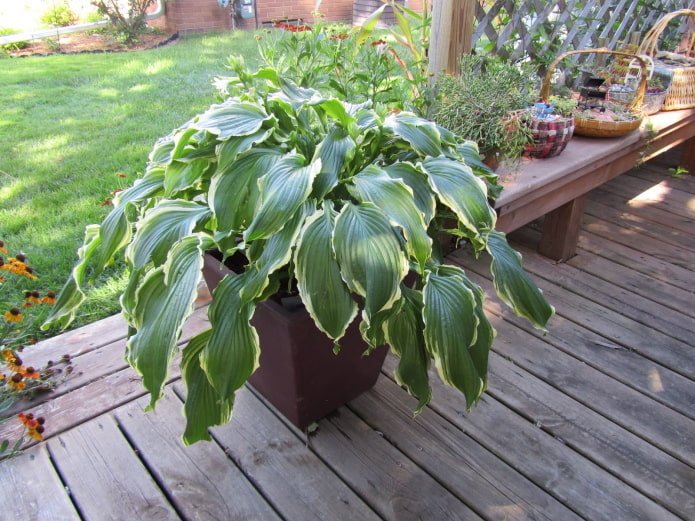
Thuja
Spherical dwarf thuja does not bloom at all, but placed on a loggia or porch in large pots and tubs looks great. It needs a spacious container with good drainage and slightly acidic sandy loam soil, which can be purchased ready-made or composed independently. Thuja will survive a not too harsh winter outdoors, but it is better to take it outside at temperatures above +4 degrees.
The main advantage of this coniferous plant is that it is evergreen, that is, it does not take days off or vacations in decorating your home.
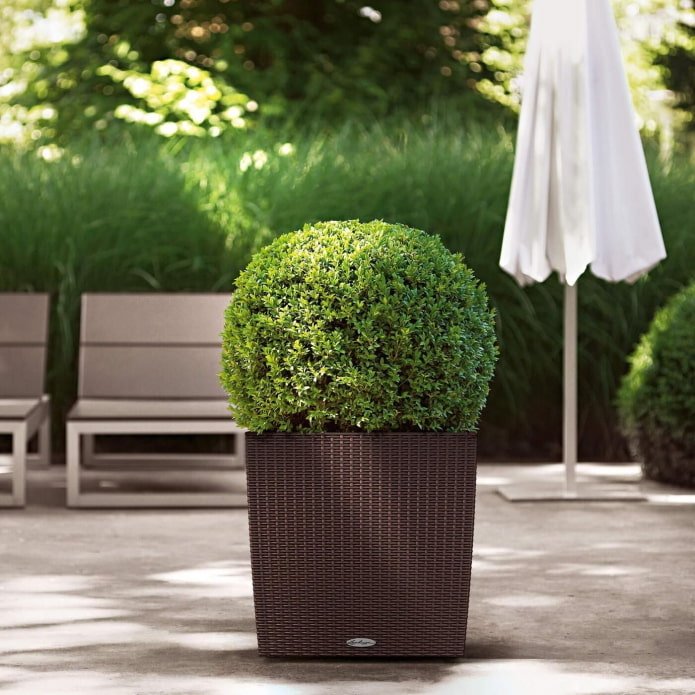
When choosing plants for outdoor flowerpots, be guided not only by aesthetic qualities, but also by the peculiarities of their maintenance, then you will not have to regret the effort and money spent, standing over another withered “favorite”.
Now reading:
- 14 effective methods of dealing with midges in flowers.
- How to clean a countertop? 6 ways to combat dirt and stains.
- Kitchen Countertops: Selection Guidelines, Types, and 40+ Ideas with Photos
- budget options for finishing the facade of a private house: the pros and cons of each.
- Design of a children’s room of 9 sq. m: inspiration in 43 photos